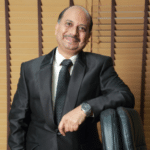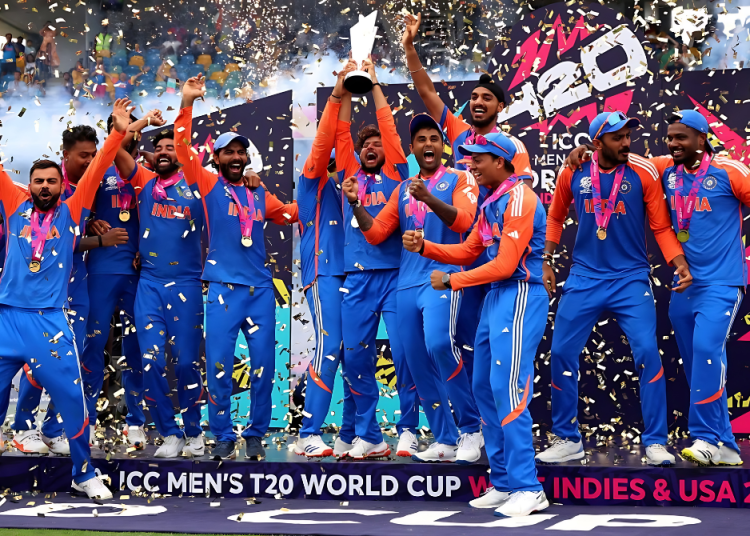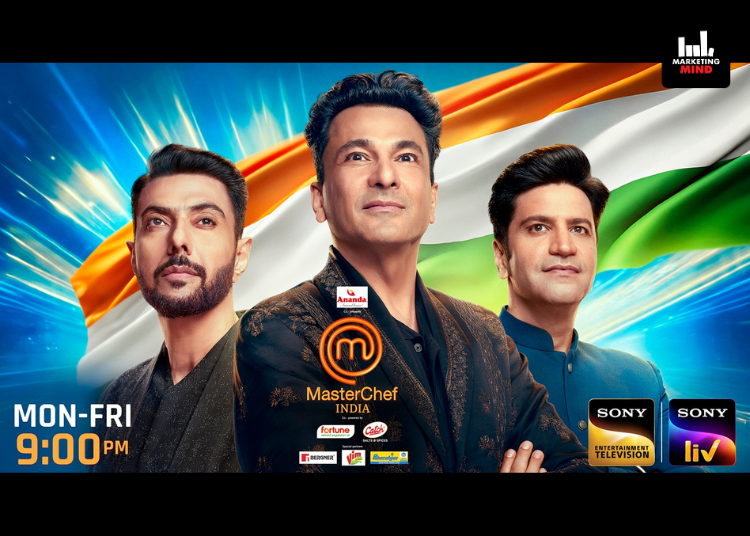India secured a thrilling victory to claim their second ICC Men’s T20 World Cup title, defeating South Africa by seven runs in an exhilarating final in Barbados. The nation erupted in celebration, echoing the jubilation felt by fans worldwide. However, amidst the euphoria, the spotlight turns to advertisers who heavily invested in this global spectacle. Did their strategies hit the mark as decisively as India’s final over?
That’s the question looming large as we analyse the impact of this monumental win on advertising revenues and brand visibility.
India’s captivating journey in the month-long ICC T20 World Cup tournament not only thrilled cricket enthusiasts but also sparked heightened interest among advertisers, especially following their entry into the final match.
However, in discussions with Marketing Mind, advertisers emphasised that while the ICC T20 World Cup presented significant opportunities, it also posed challenges for advertisers and media planners alike. They elaborated on several key points, such as the implications of the self-declaration certificate (SDC) on T20 World Cup advertising, the strategic adjustments necessitated by match schedules, and the evolving preference for a synergistic approach combining TV and digital platforms rather than relying solely on one or the other.
Advertisers’ major challenges throughout T20 World Cup
BK Rao, Senior Category Head – Marketing, Parle Products, emphasised that the primary challenge their brand encountered was the number of games that were washed out. They had an agreement for a certain Fixed Commercial Time (FCT) per match and had committed to all 55 matches, rather than selecting specific ones.

“This resulted in a substantial amount of FCT. When several matches were either washed out or not played, it led to numerous carry forwards. This situation had both positive and negative aspects, with even India matches being delayed, which posed a significant challenge,” Rao said.
“The second challenge was due to rain, which caused delays in the night and resulted in a definite loss of viewership. Other than that, the tournament was pretty good for us,” he added.

Poulomi Roy, Chief Marketing Officer, Joy Personal Care (RSH Global), said that the significant challenges brands face during the T20 World Cup regarding ad placements include balancing costs and ROI concerns, achieving creative differentiation, and effectively targeting and engaging audiences amidst a crowded advertising landscape. Real-time marketing becomes pivotal during such events, demanding agility to adjust strategies based on match progress and audience reactions, ensuring ads resonate authentically.
“To stand out in the cluttered ad space, the focus must be on innovative and engaging content that resonates with the audience and stands out amidst the sea of advertisements,” she said.
Impact of match schedules on advertising strategies

Commenting on the viewership trends, he added, “Viewership data for this tournament is still coming in. Initial matches had lower ratings, while the final, which India won, had the highest ratings. Comparing this T20 World Cup to the ODI World Cup isn’t fair, as the ODI was longer, with weekend and daytime games. Preliminary data indicates that initial matches in this T20 World Cup had 33% higher ratings compared to earlier tournaments, although we don’t have complete data for the final matches against Australia, England, and South Africa.”

R. Venkatasubramanian, COO, Havas Play, India highlighted that cricket is like a religion in India, and several brands regularly associate themselves with the sport.
While the tournament was ongoing, Venkatasubramanian, said, “The ICC T20 World Cup is a major tournament, however, this year it was held in the US and West Indies, creating significant timing issues for matches, except for those involving India. Despite this, Star Sports successfully secured many sponsors and spot buyers, filling 60-70% of their inventory. However, they didn’t reach the same level of inventory as the last T20 World Cup. Securing brands for this event has been particularly challenging, especially since it follows a major tournament like the IPL.”
Rao said, “Since we had secured the entire tournament of 55 matches, there was no question of any rate fluctuation. Regardless of whether India had won or not, the situation would have favoured us because India reached the finals. Had the scenario been different, say a final between England and South Africa, the viewership and excitement levels would have been significantly different.”
Furthermore, he stated that what worked in Parle’s favour was India being in the finals and, most importantly, winning on a Saturday. Fortunately, the final match was extremely exciting and powerful, held on a Saturday night when everyone could enjoy it without worrying about the next day. Additionally, the weather was favourable, with no rain, which also played to the brand’s advantage.
“Discussing the impact on ad hoc spot buyers during rain situations, it would have been challenging for them to select and buy a match. Rates for them would have soared by nearly 15-20%. This is because channels always reserve some inventory for last-minute buys, charging a premium for those who come in at the last minute. For instance, if India and Australia reached the semi-finals and an advertiser wanted to buy a spot then, they might be charged Rs 25-30 lakhs instead of the usual rates. This premium pricing reflects the heightened demand in the market,” Rao added.

Vandana Ramkrishna, COO, Madison Media Ace, highlighted that the average pricing did not see a significant increase over the last T20, as the period of the tournament was not in key demand period for most advertisers. However, India matches and most importantly, India-Pakistan saw a significant increase as high has 2x the last season.
Roy emphasised that scheduling matches does impact advertising strategies, focusing on prime time and high-stakes games to maximise visibility and engagement. The weekday versus weekend game strategies vary based on viewer availability, enabling us the brands to tailor the brand’s approach for optimal impact.
She stated that at Joy Personal Care, their association with cricket has been longstanding. Although the brand hasn’t been associated with the T20 World Cup, their annual association with IPL allows them to reach not only a substantial number of women consumers, but also heighten awareness of the brand and the product.
“This association also strengthens our brand, increasing consumer engagement and loyalty within our network. Further, we aim to democratise sports viewing, recognizing women as active participants in conversations around events like IPL,” Roy said.
Did the T20 World Cup’s timing post IPL and Lok Sabha elections hint at ‘cricket fatigue’?
Ramkrishna said, “There was no cricket fatigue as this was an important series and there were already talks of it being the last T20 World Cup for marquee players like Virat Kohli, clearly resulted in a lot of interest and conversations of the event.”
Dubey emphasised that there was no cricket fatigue. Viewers were enthusiastic, treating each event as unique. Since these events occurred on different days, any fatigue dissipated quickly, especially when India was winning.
Similarly, Rao said that there wasn’t any cricket fatigue when it came to T20. IPL, of course, is a lengthy and thrilling season, but its appeal is distinct from that of the T20 World Cup.
“With India’s victory, whether in the super eights or the semi-finals, the entire country is now abuzz with excitement,” he added.
Impact of SDC mandate on T20 World Cup advertising
The Ministry of Information and Broadcasting (MIB) has recently modified its mandate, originally effective from June 18, which required a ‘self-declaration certificate‘ (SDC) for every advertisement across TV, print, radio, and digital platforms. In its latest advisory, the MIB has restricted the requirement for SDC solely to food and health advertisements.
Prior to the revision outlined in MIB’s advisory, Dubey said, “The SDC mandate had no impact on us since Dabur complies with all legal requirements. We quickly adapted by creating an internal SOP and adhering to it.”
Roy said, “Regarding the SDC mandate, we understand the importance of responsible digital content regulation. It’s essential to strike a balance that ensures consumer safety without stifling creativity and innovation in brand communication.”
He added that the SDC did not influence Parle’s World Cup strategy. No new ads were launched after June 18, as Parle’s campaign details were already finalised beforehand. Thus, the brand’s approach remained unchanged throughout.
TV vs digital: Impact on advertiser success in T20 World Cup campaigns
Dubey pointed out that TV and digital platforms cater to different audiences and occasions and complement each other. It’s not about choosing one over the other, a combination works best.
“TV allows geographic targeting through language feeds, while digital offers precise targeting. However, TV has a higher entry price barrier compared to digital. Both mediums should be used together to maximise effectiveness,” he added.
Meanwhile, Rao said that previously, television dominated the landscape, but the dynamics have evolved significantly. Today, there is a diverse audience across both TV and digital platforms.
“We have noticed a substantial viewership among commuters and professionals watching content on-the-go or during work hours. Both formats cater to distinct audiences, as evidenced during events like the IPL broadcasted on Star Sports and streamed on Jio Cinema, where each platform attracted its own dedicated viewership, contributing to our success,” he added.
Ramkrishna said, “While the TV viewership for the finals is yet to come in, if we go by the concurrency on digital, the final broke all records with numbers as high as 57 million. India matches averaged around 19 million reach on digital and about 95 million reach on TV. The numbers are significantly high and clearly shows that cricket attracts eyeballs.”
Roy stated, “While being present on various platforms benefits the property, our focus is on reaching a mass audience that still prefers watching games on TV, which is the majority of India. Therefore, I believe TV delivers better results for the T20 World Cup or any other sports campaign because of multiple reasons. For instance, TV viewing happens often in a group, a lot of emotion is involved and the effect on all of us is different than that of other events. In other words, TV viewing is a heightened experience for events like the T2o World Cup.”
“TV offers the reach we seek and is well-measured, providing existing metrics for informed decisions. Our mix of platforms showcasing sports includes TV, catering to our target audience who value the TV viewing experience. For instance, being associate sponsors for IPL allowed us to leverage the property effectively for top-of-mind recall, aligning with our goal of enhancing awareness and reach, which are crucial KPIs for us. TV is instrumental in achieving high awareness levels,” she added.
With DD Sports also broadcasting the matches this year, Venkatasubramanian highlighted that it would have effectively tapped into the rural market viewership without impacting the advertising rates of Star Sports.
“CTV households are increasing daily and are expected to be the future of media consumption. Indeed, the CTV inventory for India matches was sold out 10 days before the tournament began. Overall, the rates for CTV ads were 45-50% of traditional TV ad rates for the entire tournament. These ads were being sold through spot buys and impression-based buys,” he added.
While comparing the cost of advertising during the T20 World Cup and other prime events or GEC programming, Rao said that during the IPL and World Cup, General Entertainment Channels (GECs) experienced significant pressure.
“Following the conclusion of these tournaments, other genres are anticipating a resurgence in business. To attract traditional advertisers, various strategies were employed, including offering additional bonuses or direct rate cuts. Rates were slashed by approximately 15-20% due to lower demand, as advertisers heavily invested in sports channels,” he added.
Ramkrishna said that the average pricing of the tournament was about 1x that of marquee GEC programming, but India matches went to almost 2x that of IPL.
“We are a very passionate cricket loving country. Even when performance was not peak, most key tournaments were able to command pricing and had takers. This is because, the country never tires of cricket and we over the years we have seen brands being built on the back of cricket like – MRF, Ceat, Kent, Indusind Bank, Yes Bank, Joy Cosmetics, Atom Berg to name a few,” she added.
On the other hand, Dubey explained that the T20 World Cup and GEC programming cater to different audiences and are priced accordingly. Sports events like the World Cup attract unique audiences that are hard to reach through regular GEC advertising. Both types of events provide incremental audiences, which comes at a cost.
He emphasised that Dabur has heavily invested in cricket advertising since the Asia Cup in September 2023, and also during the ODI World Cup, IPL, and T20 World Cup.
“We will continue to focus on major tournaments that offer diverse audiences and high viewership at the most cost-effective rates,” he added.
















